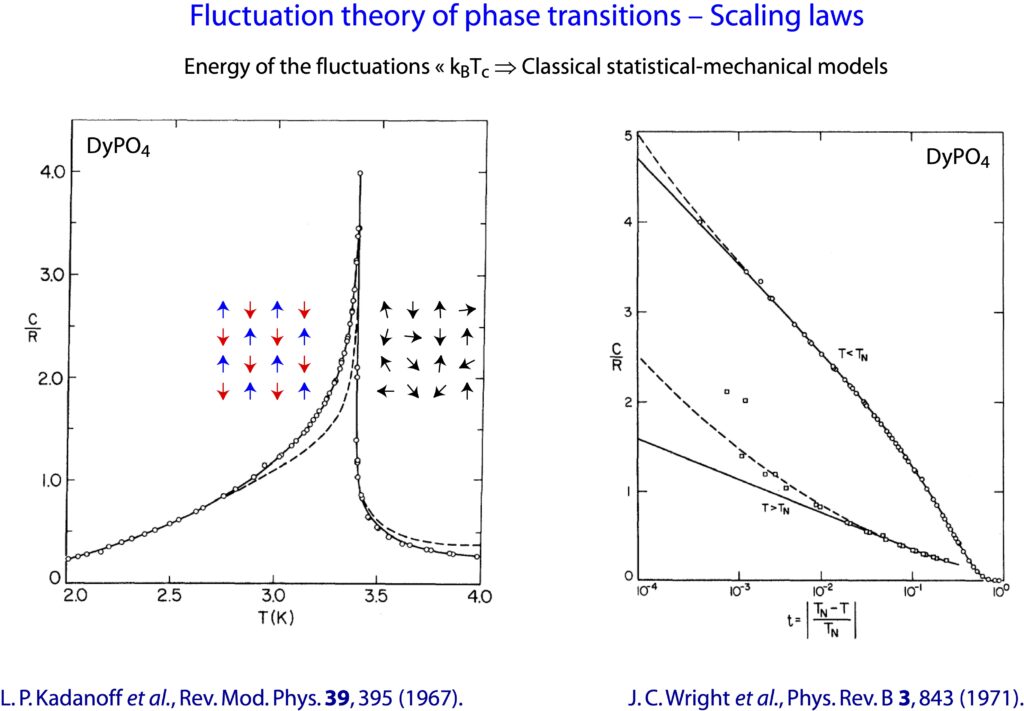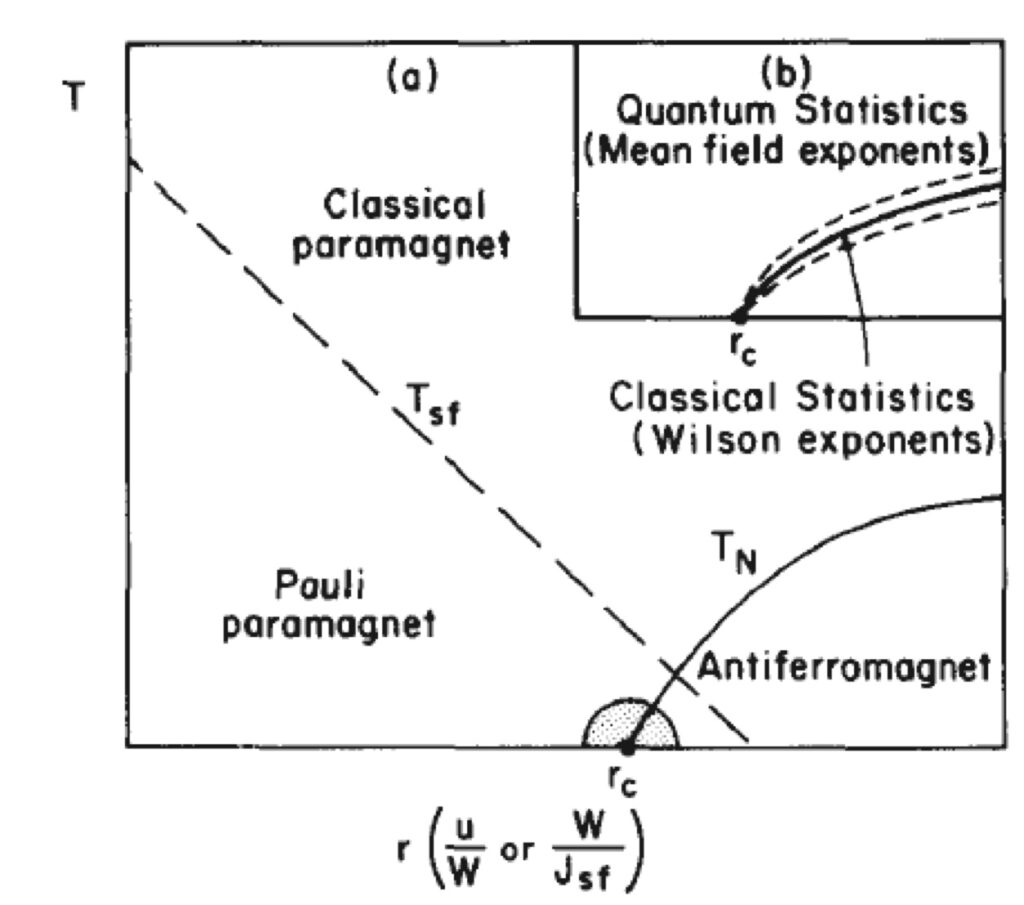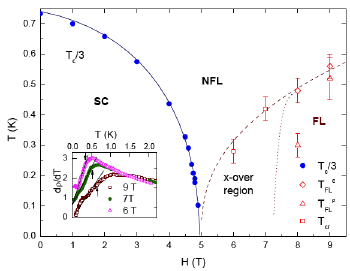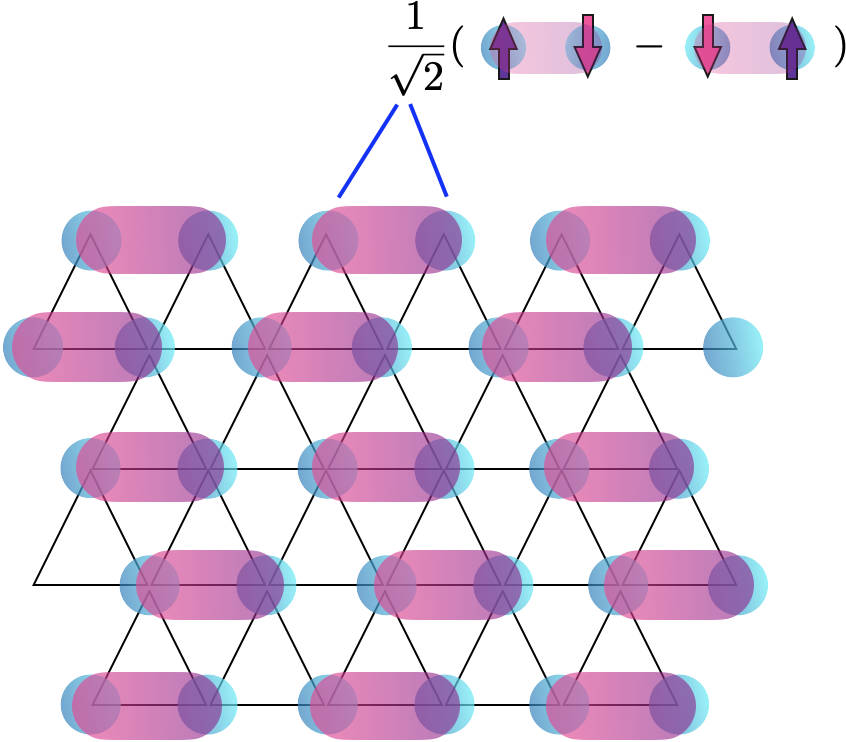Classical fluctuations

Close the critical temperature Tc of a phase transition, the thermodynamics of a system is dominated by fluctuations. Regions of the order state appear and disappear, where these regions grow larger and larger when the temperature gets closer to the critical temperature Tc. However, classical fluctuations are only important when |(T-Tc)/Tc|<0.1.
Quantum fluctuations

However, this changes completely, if one takes a classical order parameter and one suppresses the transition temperature towards zero. For example with pressure, doping or through the application of a magnetic field. It was Hertz and then Millis which showed, that the quantum fluctuations that then develop at a now quantum critical point will be felt up to unexpectedly high temperatures. Furthermore, unconventional superconductivity is often found close to the the QCP, such as in CeIn3 as first proposed by Lawrence.
QCP in CeCoIn5

It so turns out that many unconventional superconductors are found in the vicinity of a QCP. For example, in CeCoIn5, which is a unconventional heavy Fermion superconductor, specific heat and electrical resistivity measurements indicate that for fields along the c-axis, where upper critical field is about 5 T, the system is almost at a QCP.

 fr_FR
fr_FR